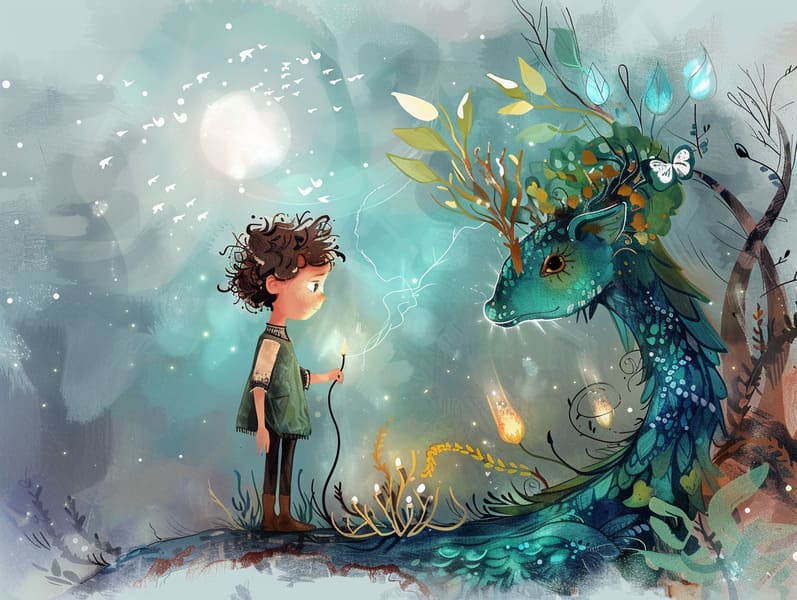
Short fairy tales have historical significance. These stories have been passed down from one generation to the next ages before they were ever transcribed. They originated from a variety of backgrounds, including Western traditions. They were initially told among older generations, often carrying themes and messages reflective of the societal norms and beliefs of the time.
Jacob and Wilhelm Grimm, Jacob and Wilhelm (the Grimm brothers), were among the first to compile and release many of these beloved narratives. Their anthology, "Grimm's Fairy Tales," included tales like "The Story of Cinderella," "Little Brother and Little Sister," and "Schneewittchen," which have since become staples in the world of famous fairy tales. Similarly, Andersen's charming tales, such as "The Little Mermaid," and "The Story of the Ugly Duckling," have captivated hearts worldwide, securing their place in the pantheon of famous fairy tales.
Though they are centuries old, traditional fairy tales remain as pertinent as ever, especially as children's night stories. These magical stories are now available in diverse formats, including gorgeously illustrated books, fantastical animations, and free fairy tales online.
Their enduring popularity can be ascribed to several captivating elements:
Valuable Lessons: Classic fairy tales often illustrate important moral lessons. Tales like "The Boy Who Cried Wolf" teach the merit of truth, while "The Race of the Tortoise and the Hare" show the values of determination and unassuming nature. These tales offer young readers clear distinctions between ethical and unethical, guiding their moral compass in a tender yet deep way.
Warmth and Understanding: Classic fairy tales frequently present individuals facing problems and hurdles, motivating audiences to understand with their struggles and support their triumphs. For instance, "The Story of Beauty and the Beast" teaches us the merit of looking deeper to comprehend the true character of a person, cultivating awareness and insight.
Cultural Awareness: Many old fairy tales are rooted in the cultural contexts from which they were born. Learning from these stories can provide captivating looks into different heritages, building a sense of cultural respect and understanding.
Fantasy and Innovation: The whimsical elements in old fairy tales—magical beings—kindle children’s fantastical thinking. These stories lead readers to otherworldly realms, promoting fantasy ideas and a sense of marvel that persists a lifetime.
Classic fairy tales are not only spellbinding but also illuminating. They work as spellbinding tools in advancing various intellectual and emotional capacities in young readers. When traditional fairy tales are narrated, they enhance language skills by presenting new language items and elaborate sentence structures. This practice also nurtures hearing perception and mental focus, as children follow the story, expectant to see what happens next.
Furthermore, examining the themes and characters of classic fairy tales can nurture analytical skills and reasoning skills. Kids are taught to spot patterns, expect results, and know cause and effect. These contemplations also contribute to the young speak out their thoughts and feelings, cultivating their emotional intelligence.
In today’s technological era, the abundance of online fairy tales has made these narratives more within reach than ever. Internet sites and programs feature extensive collections of children's fairy tales that can be explored or listened on anytime, anywhere. Fairy tales narrated are particularly widespread, providing an immersive method for the young to appreciate these whimsical stories. Read-aloud stories and read-to-me videos carry characters and settings to life, often joined by fantastical melodies and soundtracks that amplify the storytelling journey.
The lasting appeal here of timeless fairy tales lies in their ability to alter to modern society while staying true to their core values. Contemporary reinterpretations of these fairy tales often introduce more varied figures and modern settings, making them relevant to today’s audience. However, the underlying themes of valour, benevolence, and integrity remain unchanged, continuing to touch audiences of all ages.
Timeless fairy tales also offer a sense of peace and familiarity. They grant a organized narrative with a obvious beginning, middle, and end, often drawing to a close with the termination of conflicts and the triumph of truth over falsehood. This certainty can be encouraging for young readers, giving a sense of constancy in an inconstant world.
Traditional fairy tales continue to charm and guide new generations, maintaining their magic and pertinence in modern society. As nighttime stories for kids, they provide a perfect blend of charm and enlightenment, cultivating moral values, empathy, and creativity. The existence of online storybooks and the likability of fairy tales recited affirm that these timeless narratives remain obtainable to new generations.
By retaining and circulating these narratives, we continue to esteem the rich tapestry of narrative artistry and cultural heritage. Whether you are viewing a richly illustrated book, experiencing a internet collection, or listening on an sound book, the elegance of classic fairy tales is always within reach. These tales demonstrate of the immortal effect of tales and its ability to unify us across centuries and lands.
No matter if you are delving into a gorgeously illustrated book, seeing a web-based collection, or playing an sound book, the delight of children's fairy tales is always within reach.
These tales remind us of the perpetual influence of fairy tales and its ability to tie us across centuries and lands, casting a charm that charms and informs alike.